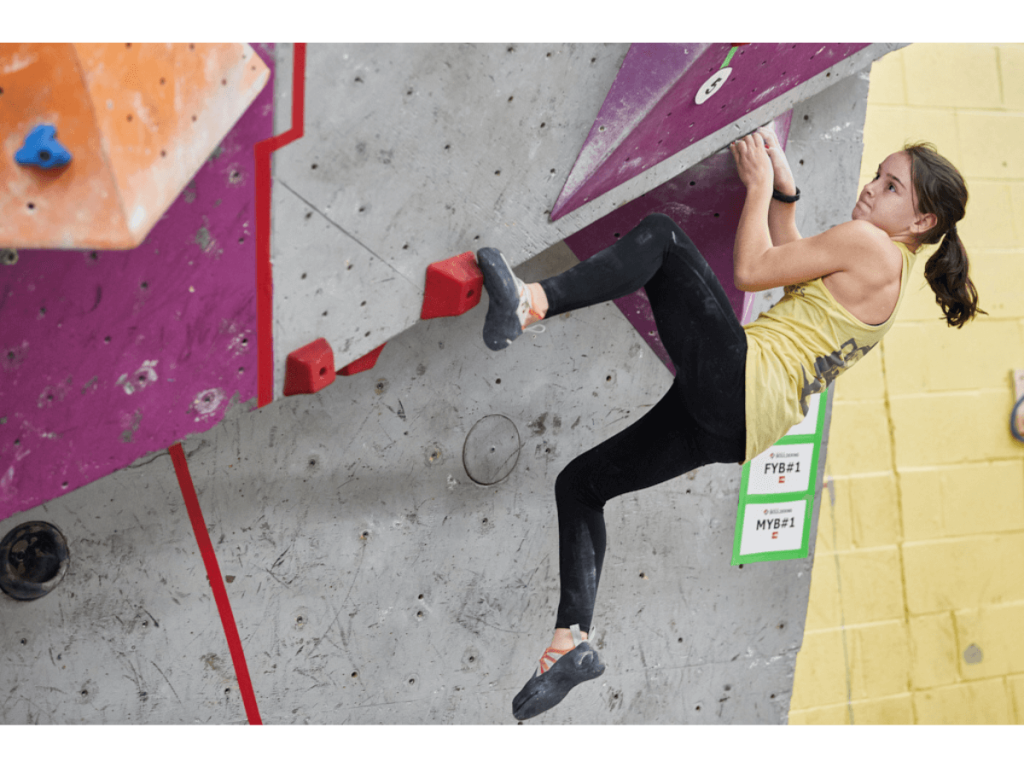Outdoor climbing is the root of the sport. It is where adventure seekers first put their grip strength abilities to the test, asking themselves, “What’s the hardest possible way I can get to the top of this rock?” Unlike bouldering in a commercial rock gym, most outdoor boulders end in a ‘top out’ where you climb up and over the boulder and descend via a safer, less steep path. If you have spent most of your climbing career gym climbing, topping out may feel scary and the movement uncomfortable. Knowing how to top out safely and effectively can open doors to new possibilities in your climbing. To help you tap into the world of outdoor climbing and feel confident stepping up to a boulder ending in a top-out, here’s a list of 5 Tips to Top Out a Boulder Problem. Note that it is possible, but uncommon, to come across a gym boulder with a top out. If you do, tips #2, #4, and #5 from the list will apply. Tip #1 and #3 are most applicable to outdoor situations.
5 Tips to Top Out a Boulder Problem

1. Properly Place Crash Pads
If you fall topping out, it’s from a higher height, so you want to place the crash pads appropriately. Look at the end of the boulder problem and determine the general area you will top out. Make sure you have pads under that spot and in the places where you are likely to fall from that position (think about the movement and the trajectory a fall would take you). If you don’t have many crash pads, ensure your spotter shuffles them from their starting position to the appropriate ending position while climbing. It’s also essential to ensure no gaps between adjacent crash pads, as gaps invite ankle sprains, twists, and breaks.
2. Lean Forward
Usually, the top of a boulder meets the face you were climbing at more or less of a 90-degree angle. Because of this, at some point during the top out, your lower body will contact the vertical face while your upper body is in contact with the horizontal top. When you find yourself in this position, it is crucial to keep leaning forward with your chest, working to keep it close to the rock. Doing this will help you feel more secure and save you from falling backward as you move your lower body up and over the top edge of the climb.
3. Make Sure You Have an Attentive Spotter
Spotters aren’t a belayer. They won’t stop you from falling off the wall, but they can help you land on the pads and protect your neck/spine/head. Tip #1 mentioned the role of spotters in moving the crash pads around as you progress up the climb. To effectively complete this task, they must watch you and know/anticipate where you will land. In addition to their role in your safety, your spotter can offer encouragement and keep you from panicking (see tip #4).
4. Don’t Panic
The least advantageous thing you can do when toping out a boulder is panic. Panicking can cause you to overgrip and pump out, and your muscles start shaking. The first sign you are beginning to panic is when your breath quickens and your heart starts pounding. If you feel these first signs, stop and breathe deeply, and exhale out loud. Focus on your breath for a few cycles of inhales and exhales. Then, keep climbing but remain conscious of your breath. Even better than waiting for the first taste of panic is consciously focusing on your breath while climbing, trying to keep a steady pace.
Additionally, letting the panic set in makes you more likely to rush your movements. This can be potentially dangerous, as you may misplace a foot or slip while finishing the top out.
5. Believe in Yourself
‘You’ve got this!’ Tell yourself that sentence over and over. Remind yourself that you are a strong, capable climber. Confidence is the fear killer, and doubt is the fear feeder. If you let the doubt win, the topping out will feel scary; you may panic and fall. If you believe you can conquer the top-out, you’ll remain calm and in control of your movements. Before you know it, the confident you will be standing on top of the boulder, flexing your success, while the doubtful version of you will be sitting on the crash pad.
Are you ready to tackle some outdoor boulder problems? Grab a friend or two, some crash pads, and your climbing gear, and head out to the crag of your choice. When you come to a boulder problem you’d love to try but ends in a top-out, remember these five tips: properly place your crash pads, lean forward, make sure your spotter(s) is paying attention, don’t panic, and above all else, believe in yourself. If you’re reading this and have topped out outdoor boulders, please share your tips with the community below! And if you found this blog informative and helpful, share your thoughts below! We appreciate all feedback!

Recent Comments